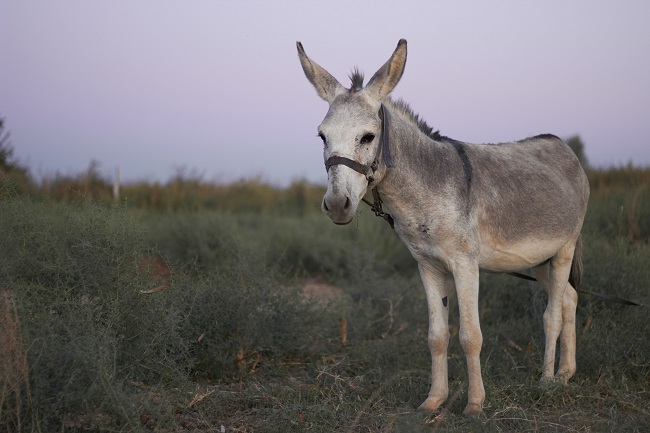
Studies indicate that the donkey’s resting metabolism is 20% lower than that of a horse. Furthermore, it has been suggested that the energy requirements of donkeys are in the order of 75% of those for horses. In terms of digestible energy (DE) requirements for donkeys fed a hay/straw mixed diet, donkeys required considerably less DE intake than ponies to satisfy their maintenance requirements.
When equations developed for horses have been applied to estimate DE requirements of donkeys, these equations in general have overestimated (34 -51%) their DE requirements. The donkey seems to have a lower energy cost of walking and work per unit live weight, compared to other animals commonly used for work (horse, ox, and buffalo). Thus, reports indicated that energy cost of walking donkeys and ponies was 54% and 50% lower, respectively than in cattle.
Unlike donkeys in the USA, donkeys in the Mediterranean region and Africa are numerous and play an important role in the regions’ rural domestic economy. Despite its small frame-size when compared with cattle, the donkey is considered the most efficient power unit in agriculture and is the reason why donkeys are traditionally used for transport and lighter tillage operations in some parts of the world. Some researchers have demonstrated that calculations based on the metabolic live weight, work output of donkeys pulling a load is higher than that of cattle doing similar work.
Donkeys can utilize protein very efficiently. Donkeys can re-absorb up to 80% of the urea filtered by the kidneys when fed a wheat straw diet. The efficient utilization of dietary protein, a high true nitrogen digestibility, and the high capacity to retain and recycle urea creates the ability for the donkey to subsist in low-protein forage areas. The crude protein requirements of donkeys are low, falling between 3-8 % of the diet. Miniature donkeys can be maintained on diets containing 8% crude protein. Donkeys have lower water requirements per unit of body weight than other domesticated animals (horse included) except for camels. They can conserve body water and avoid thirst by reducing sweating for thermoregulation and reduced fecal water loss. The amount of water consumed is influenced by the environmental temperature and humidity, the type of feed being consumed, the physiological status of the animal and the amount of work.
Studies indicate that donkeys can drink up to 9% of BW per day under high ambient temperature compared to 4-5 % of BW/day in temperate regions, independent of the amount of feed offered. Donkeys can withstand up to 25 % weight loss due to dehydration and recover the loss when water is available. Donkeys normally will not over drink water after being dehydrated, unlike ponies that when offered water under a similar situation can overcompensate for a water deficit previously incurred. This article does a good job of providing more details on a donkey’s nutritional needs.
Related Articles
Debunking 6 Common Horse Myths
The 4 Signs of Healthy Chickens




Comment here